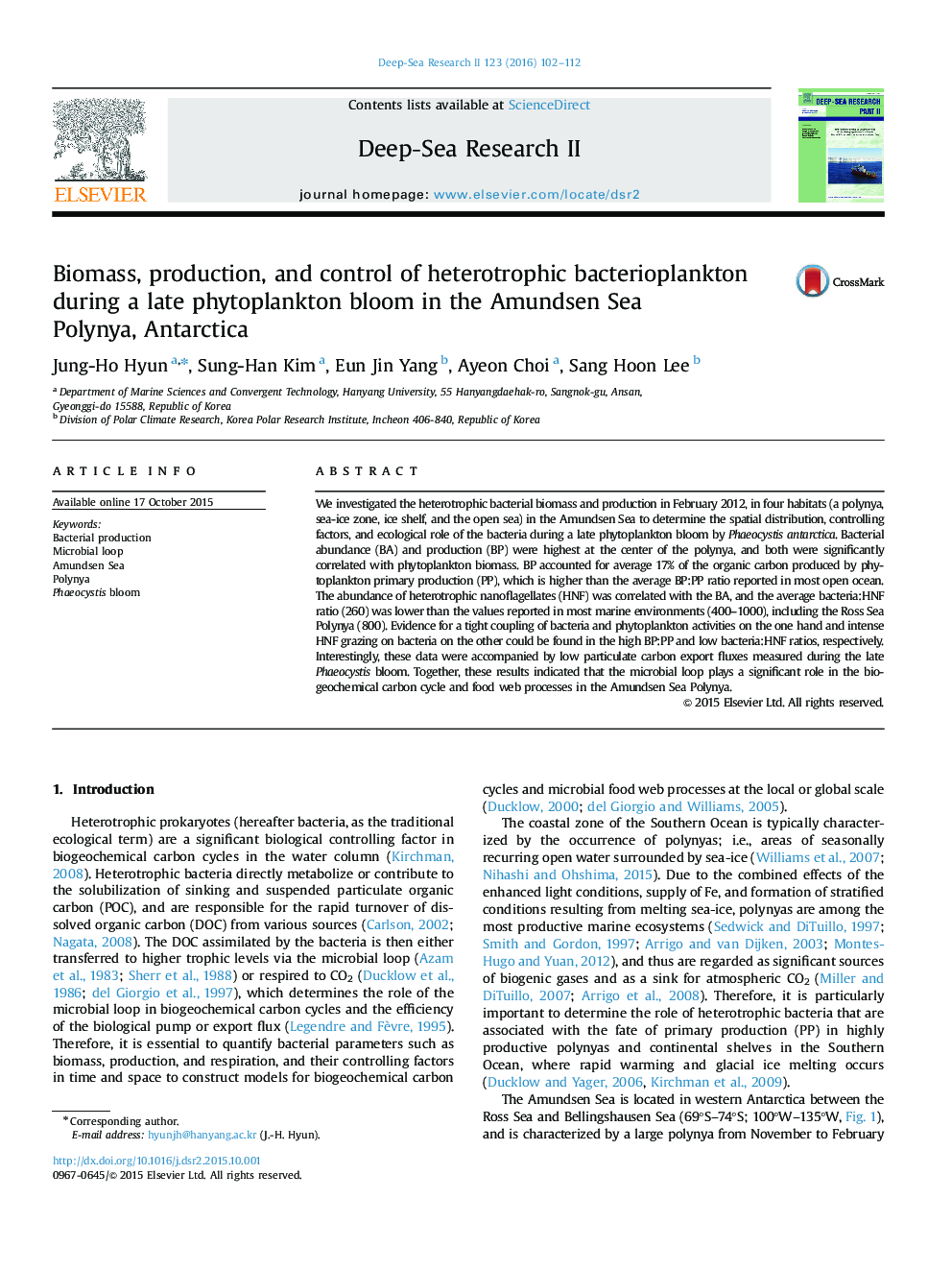| Article ID | Journal | Published Year | Pages | File Type |
|---|---|---|---|---|
| 6384003 | Deep Sea Research Part II: Topical Studies in Oceanography | 2016 | 11 Pages |
Abstract
We investigated the heterotrophic bacterial biomass and production in February 2012, in four habitats (a polynya, sea-ice zone, ice shelf, and the open sea) in the Amundsen Sea to determine the spatial distribution, controlling factors, and ecological role of the bacteria during a late phytoplankton bloom by Phaeocystis antarctica. Bacterial abundance (BA) and production (BP) were highest at the center of the polynya, and both were significantly correlated with phytoplankton biomass. BP accounted for average 17% of the organic carbon produced by phytoplankton primary production (PP), which is higher than the average BP:PP ratio reported in most open ocean. The abundance of heterotrophic nanoflagellates (HNF) was correlated with the BA, and the average bacteria:HNF ratio (260) was lower than the values reported in most marine environments (400-1000), including the Ross Sea Polynya (800). Evidence for a tight coupling of bacteria and phytoplankton activities on the one hand and intense HNF grazing on bacteria on the other could be found in the high BP:PP and low bacteria:HNF ratios, respectively. Interestingly, these data were accompanied by low particulate carbon export fluxes measured during the late Phaeocystis bloom. Together, these results indicated that the microbial loop plays a significant role in the biogeochemical carbon cycle and food web processes in the Amundsen Sea Polynya.
Related Topics
Physical Sciences and Engineering
Earth and Planetary Sciences
Geology
Authors
Jung-Ho Hyun, Sung-Han Kim, Eun Jin Yang, Ayeon Choi, Sang Hoon Lee,
